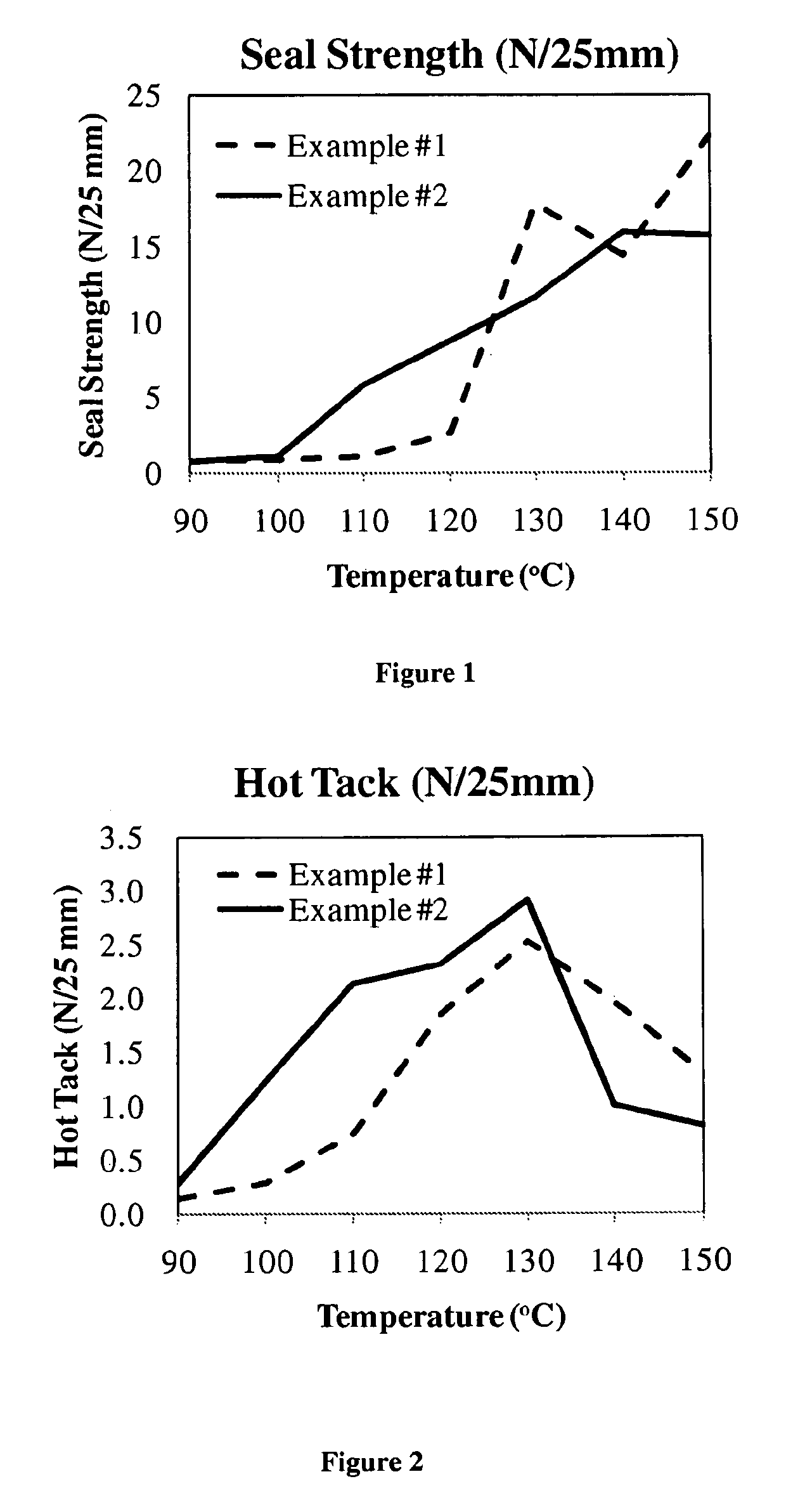Bioriented polyethylene film
a polyethylene film and oriented technology, applied in the field of oriented polyethylene film, can solve the problems of residual shrinkage not being a desired property, affecting the appearance of the product, and compromising toughness and film clarity, etc., and achieves excellent optical properties, high gloss, and high clarity.
- Summary
- Abstract
- Description
- Claims
- Application Information
AI Technical Summary
Benefits of technology
Problems solved by technology
Method used
Image
Examples
Embodiment Construction
[0020]Test Methods
[0021]Unless otherwise indicated, the following properties are determined by the indicated test method throughout this specification.
[0022]Density is determined according to ASTM D-792.
[0023]Melt index, or I2 for ethylene polymers (that is, those polymers comprising at least 50% by weight of units derived from ethylene monomer) is determined according to ASTM D1238, 190° C., 2.16 kg.
[0024]Tensile strength, ultimate elongation and 2% secant modulus were measured with a ZWICK universal tester by ASTM D 882.
[0025]Dart drop impact was tested with a Ceast dart drop impact tester by ASTM D 1709.
[0026]Hot tack was conducted on a J & B hot tack tester 400, with a sample of 25 mm width, 0.5 seconds of sealing time, and 0.275 N / mm2 of seal pressure. Sealed specimens were backed up with polyethylene terephthalate (PET) tape. The peel speed was 200 mm / sec. The delay time was 0.1 second.
[0027]For the seal strength test, heat seal was conducted on a J & B hot tack tester 400. Th...
PUM
| Property | Measurement | Unit |
|---|---|---|
| ultimate elongation | aaaaa | aaaaa |
| temperature | aaaaa | aaaaa |
| residual shrinkage | aaaaa | aaaaa |
Abstract
Description
Claims
Application Information
 Login to View More
Login to View More - R&D
- Intellectual Property
- Life Sciences
- Materials
- Tech Scout
- Unparalleled Data Quality
- Higher Quality Content
- 60% Fewer Hallucinations
Browse by: Latest US Patents, China's latest patents, Technical Efficacy Thesaurus, Application Domain, Technology Topic, Popular Technical Reports.
© 2025 PatSnap. All rights reserved.Legal|Privacy policy|Modern Slavery Act Transparency Statement|Sitemap|About US| Contact US: help@patsnap.com

